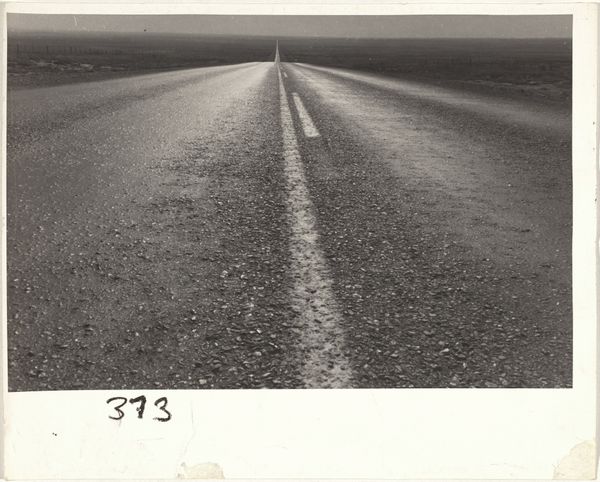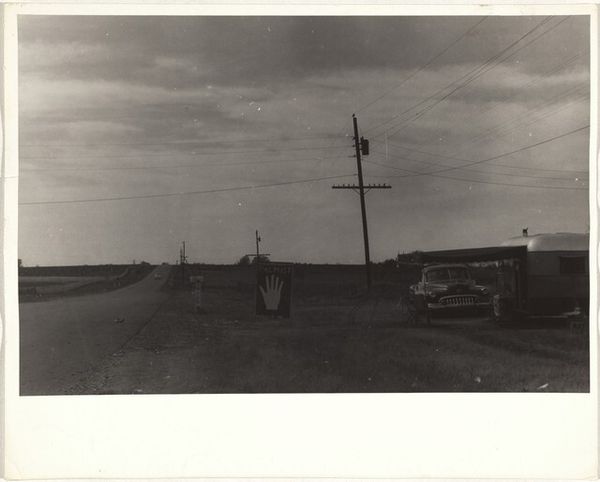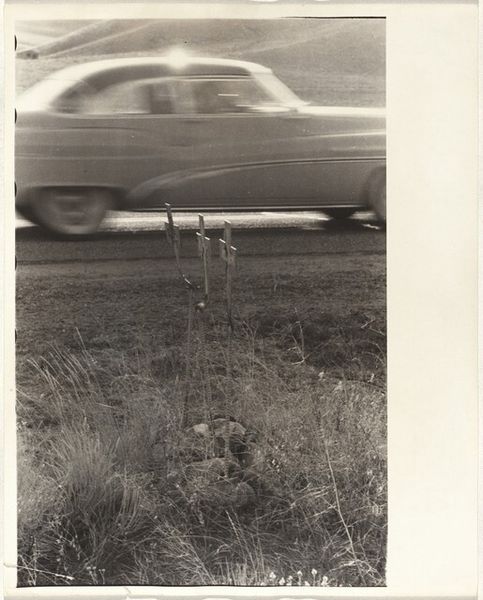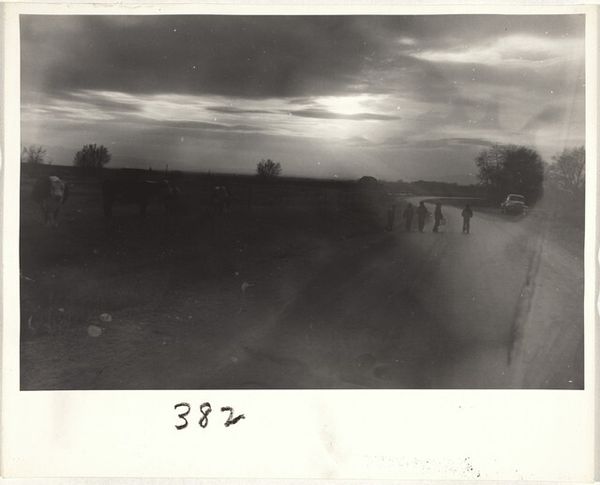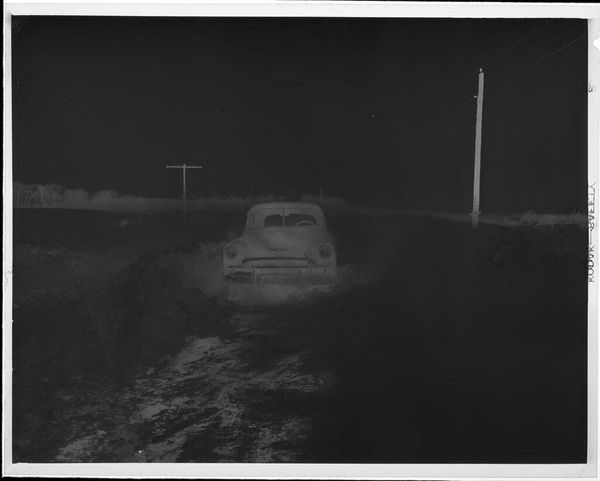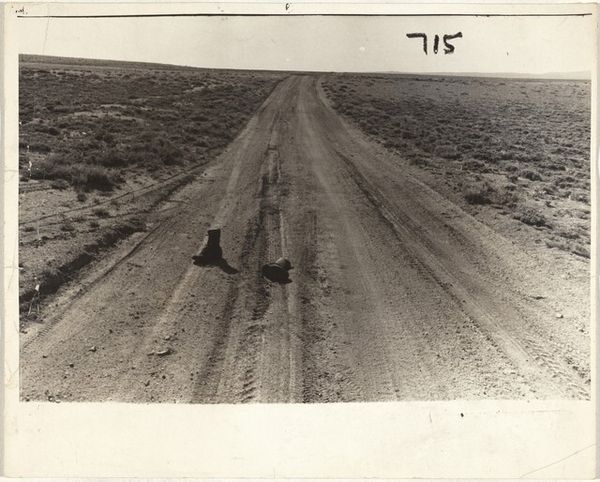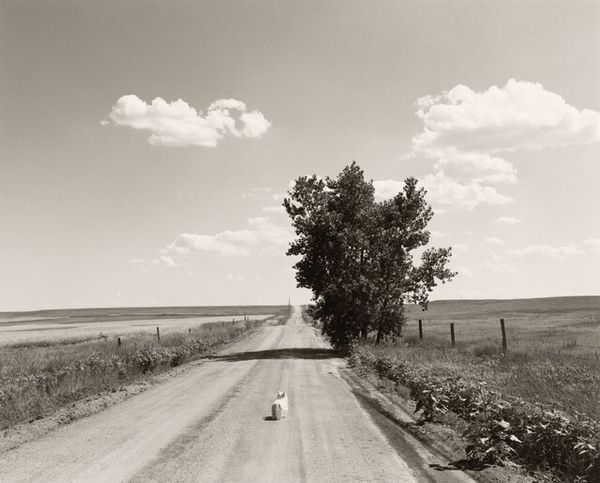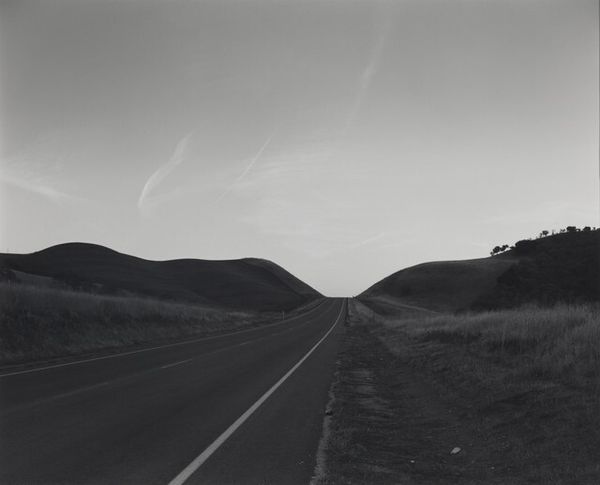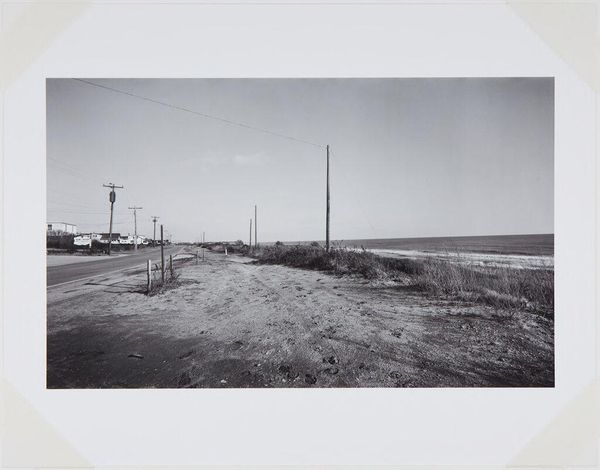
Dimensions: sheet: 20.4 x 25.2 cm (8 1/16 x 9 15/16 in.)
Copyright: National Gallery of Art: CC0 1.0
Curator: Here we have Robert Frank's 1955 photograph, "Automobile on U.S. 285, New Mexico," a gelatin silver print that captures a solitary car driving towards us on a seemingly endless highway. Editor: My first thought is loneliness. The vastness of the landscape, the single car...it feels like isolation. There's a raw, almost bleak quality to it. Curator: Absolutely, Frank was known for capturing the mood of postwar America with an outsider's perspective. He was Swiss, after all. This image is from "The Americans," a project funded by a Guggenheim Fellowship. He aimed to document American life. Editor: It’s a complicated depiction, though. The romantic idea of the open road collides with the realities of a society grappling with inequality. Who gets to travel freely on this road, and who is left behind? Is this freedom, or is this just another form of alienation in a country obsessed with the automobile? Curator: That's key. While the car might symbolize freedom and mobility, the composition, the desolate landscape, suggests a certain social commentary. Think about the rise of car culture coinciding with segregation. Whose America are we seeing? Editor: Exactly. The seemingly neutral gaze of the camera doesn't exist. Every choice, every angle, tells a story. What story is told when this kind of image circulates? Is it perpetuating myths of American individualism, or is it a critique? Curator: The texture, the stark contrast of the black and white print... it's almost documentarian, but then the subtle artistic choices steer it into a statement. Editor: It is not a simple representation; it's heavy. We see both opportunity and social divides within a society obsessed with an industry like cars. This tension is palpable, isn't it? The romance of the road trip alongside the anxiety of a nation confronting rapid social and economic change. Curator: Looking at Frank's other work, it becomes clear this wasn't accidental. He wasn't just showing us America; he was asking us to confront its contradictions. Editor: Which is what makes the photograph still relevant, so many years later. Curator: Indeed, its quiet intensity resonates far beyond its mid-century context. Editor: Art becomes an invitation.
Comments
No comments
Be the first to comment and join the conversation on the ultimate creative platform.
